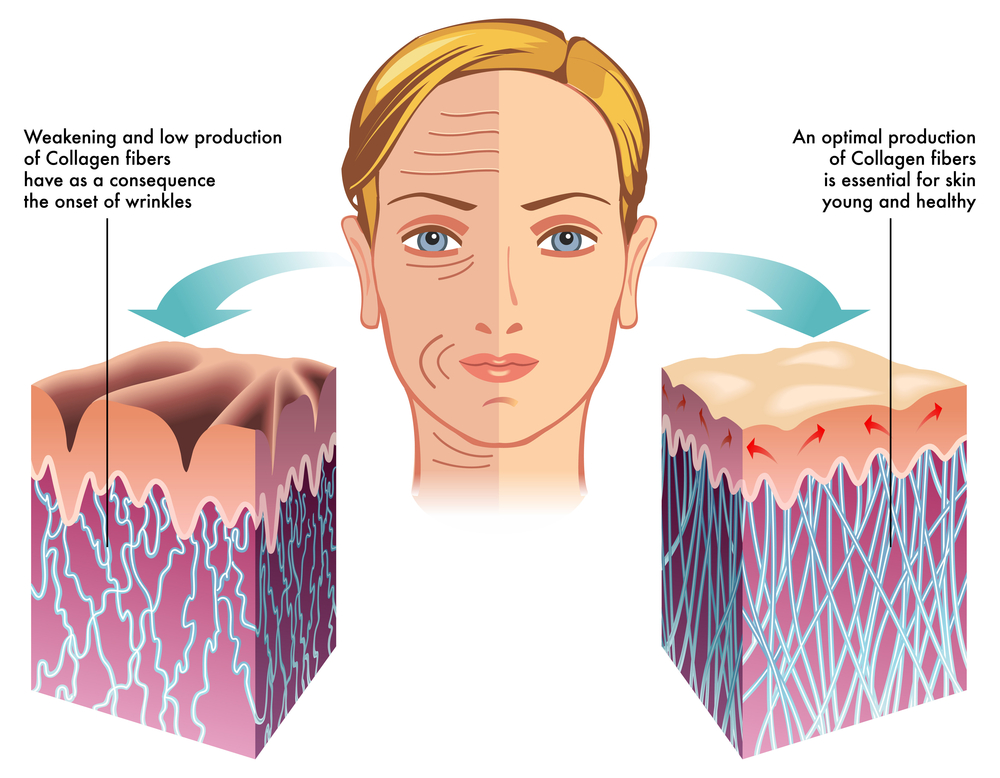Ehlers-Danlos syndrome is a genetic disorder. If a parent has the most common type of the disorder, hypermobile Ehlers-Danlos syndrome, they have a 50% chance of passing it onto their children. This condition only affects about 1 in every 5,000 people. Ehlers-Danlos syndrome affects the connective tissue in the body, making it weaker than normal. Connective tissues are things like cartilage, bones, blood, fat, tendons and ligaments. Having weaker connective tissues can affect the skin, joints, muscles, and blood vessels. People who have Ehlers-Danlos syndrome don’t produce collagen the way that they should. There is no cure for Ehlers-Danlos syndrome, but with treatment the condition can be managed.
There are different types of Ehlers-Danlos syndrome, EDS.
These types are based on where you are affected, and what your symptoms are. The most common signs and symptoms of EDS are overly stretchy joints, joint pain, dislocation, and stretchy and fragile skin. Here are 3 of the more common types of EDS:
Hypermobile Ehlers-Danlos Syndrome
The most common type of Ehlers-Danlos syndrome is hypermobile Ehlers-Danlos syndrome. Which causes your joints to bend further than they should. It is easier for you to suffer dislocation, or sprains.
Fragile Skin Ehlers-Danlos Syndrome
Another common type is when it affects your skin. The skin becomes fragile and tears easily. Your skin may also stretch extremely far back, but will snap back into place when let go. This can also cause you to bruise more easily. Scars may heal unusually. In an incident where you may need to get sutures, the wound may take a long time to heal, or heal unevenly.
Vascular Ehlers-Danlos Syndrome
A rare type is vascular Ehlers-Danlos syndrome. This type affects the blood vessels. This type can be fatal in some cases. Vascular Ehlers-Danlos syndrome puts you at a higher risk for your organs to tear, such as your heart, uterine wall, or intestines. It is important that women who have this type of Ehlers-Danlos syndrome consult with a doctor before coming pregnant, because it can be fatal for them and their baby.
People who have vascular Ehlers-Danlos syndrome often all have similar features such as thin nose, thin upper lip, small earlobes, and prominent eyes. Symptoms can all range in severity.
Purium’s Collagen Support Pack
Diagnosis
Usually a doctor will diagnose Ehlers-Danlos syndrome with a physical exam instead of genetic testing. They will first want to know your family’s medical history as well as your personal medical history. If you have a family member with the condition it will clue your doctor into knowing that is a possibility. During the physical exam your doctor will test how far your knees, elbows, fingers, and waist bend. They will also pull on your skin to see how far it stretches.
If your doctor suspects that your heart or blood vessels are compromised by this condition they may want to schedule an echocardiogram. An echocardiogram checks the blood flow through the heart and heart valves. Your doctor may want to do some imaging tests such as a CT scan or an MRI. A biopsy can also show signs of abnormal collagen.
Treatment Options
There is no cure for Ehlers-Danlos syndrome. There are treatment options to help minimize symptoms. There may be a few doctors on your treatment team depending on what symptoms you are experiencing. An orthopedist may be used to help with joint and skeletal problems. A dermatologist will help with skin conditions. A rheumatologist can help with diseases of the connective tissue.
Physical therapy is important when you have Ehlers-Danlos syndrome. Building muscle tone, building coordination, and gaining stronger muscles will help limit dislocations and sprains.
Finding an appropriate exercise routine can also be beneficial. Finding things like low impact sports, hiking, swimming, or tai-chi, can help take stress off joints, while working out.
Braces or other assistive devices like wheelchairs or scooters can be part of your treatment. Supportive shoes.
Calcium and vitamin D supplements will help build stronger bones.
Over the counter joint pain relief.
Blood pressure medications.
Wearing sunscreen and using mild soaps can help protect your fragile skin.
Surgery may be needed to help repair dislocations, or to repair ruptured blood vessels or organs.
Purium Products that Contain Calcium:
Purium Products that Contain Vitamin D:
Warnings & Complications
If you have Ehlers-Danlos syndrome you should not participate in contact sports, and stay away from high impact exercise. It is also important to rest your jaw, and to use a soft bristle brush when brushing your teeth. Do not lift heavy things, or strain to lift an object.
The most common complication of Ehlers-Danlos syndrome is dislocation. This is when a bone in one joint is pushed out of its normal place. Never try to push the dislocation back in place on your own. It may require surgery to fix. Another complication is a problem with the heart valves pumping blood to the heart effectively. Other complications include severe curvature of the spine, thin corneas, curved limbs, or teeth and gum problems.
Outcomes
There is no way to prevent Ehlers-Danlos syndrome since it is a genetic disorder. With treatment symptoms can usually be reduced. Most people live a normal life as long as they do treatment and avoid certain high impact activities. Ehlers-Danlos syndrome usually doesn’t change or lower life expectancy.
Ehlers-Danlos syndrome affects connective tissue and collagen production a symptom is overly bendy joints! #HealthSurgeon
Sources:
https://www.mayoclinic.org/diseases-conditions/ehlers-danlos-syndrome/symptoms-causes/syc-20362125
https://my.clevelandclinic.org/health/diseases/17813-ehlers-danlos-syndrome
https://www.webmd.com/a-to-z-guides/ehlers-danlos-syndrome-facts
https://wellself.com/healthy-feet-foot-care-determining-shoe-size/









